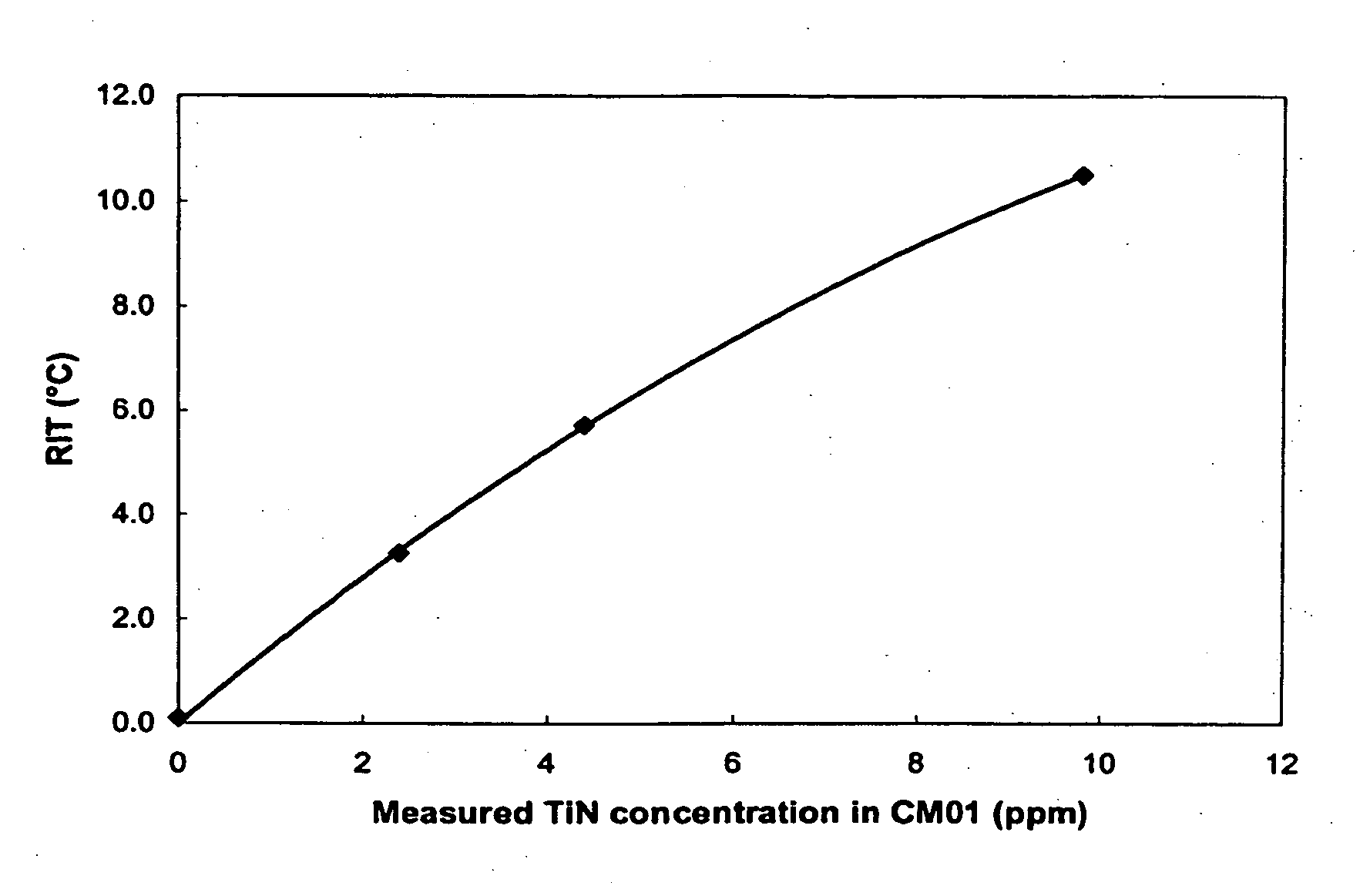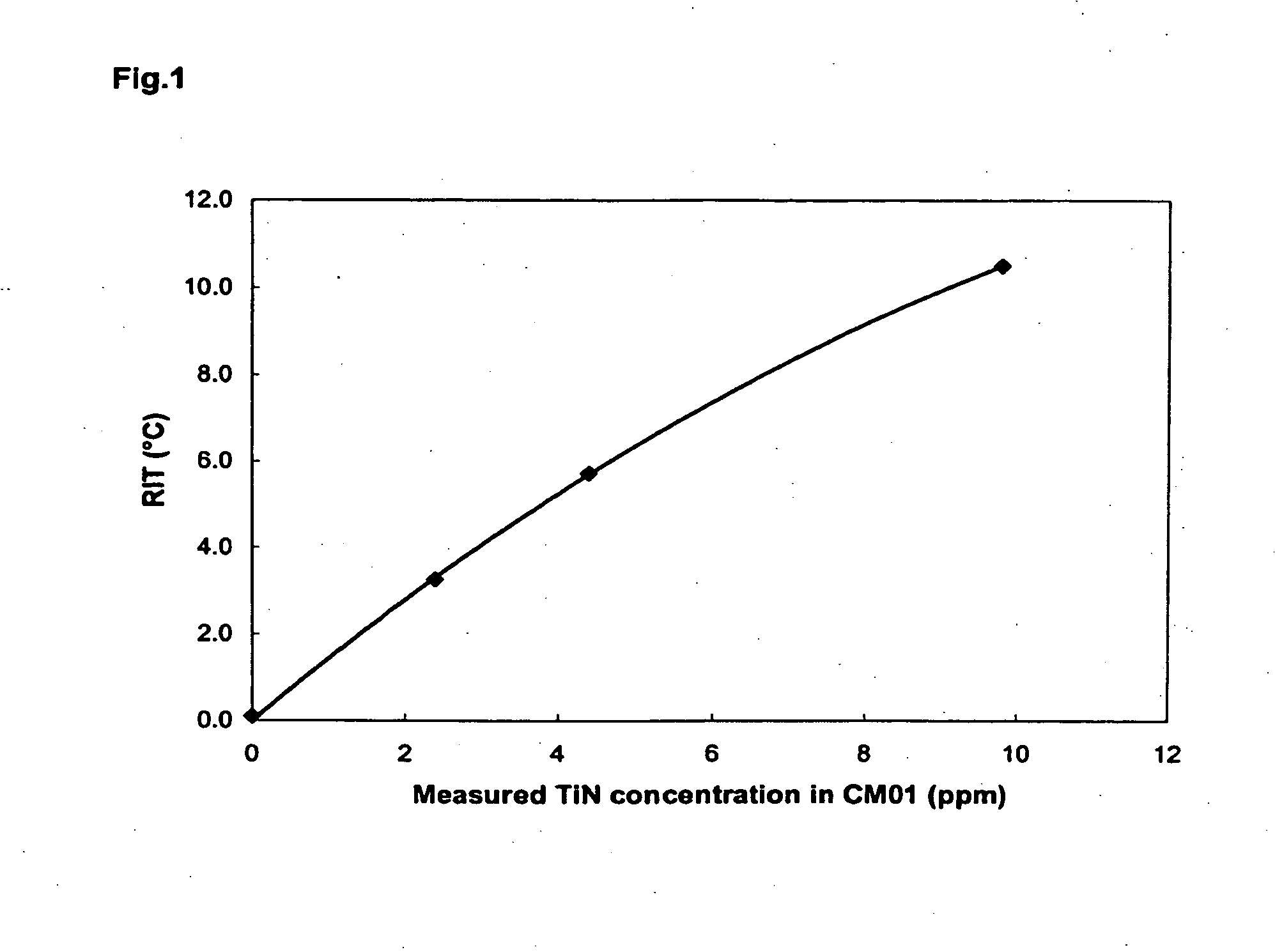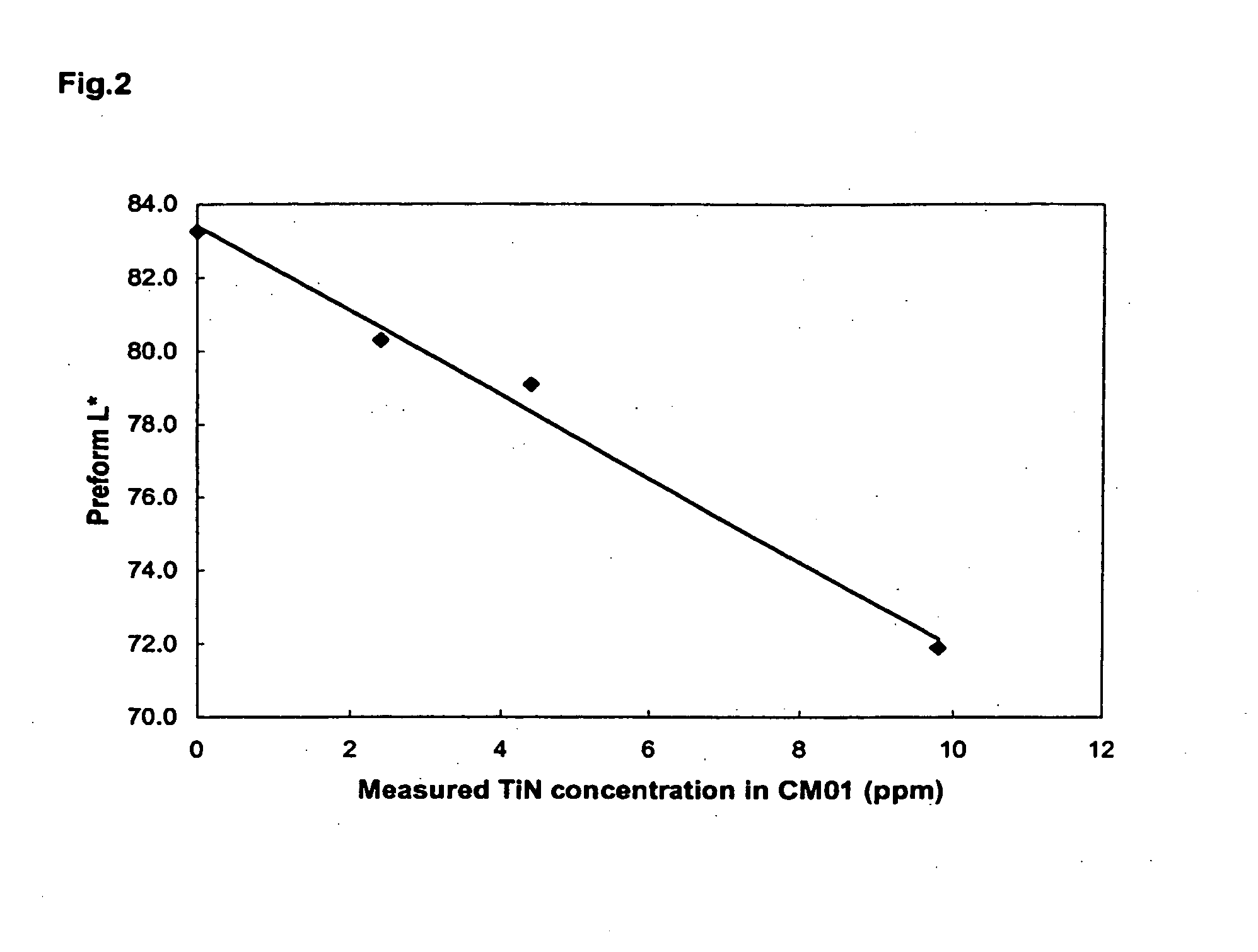Polyester polymer and copolymer compositions containing titanium nitride particles
a technology of titanium nitride and polymer, applied in the field of polymer compositions, can solve the problems of poor redox performance of polymer, and negative effect of materials on the visual appearance of pet containers, etc., to improve the redox performance, reduce yellowness, and increase the resistance of contents
- Summary
- Abstract
- Description
- Claims
- Application Information
AI Technical Summary
Benefits of technology
Problems solved by technology
Method used
Image
Examples
examples
Experimental
[0148]The following nanometer-size particles used in the examples were purchased from Nanostructured & Amorphous Materials, Inc. (Houston, Tex.):[0149]1. Nanometer-size titanium nitride (TiN) particles. The samples had an average particle size of 20 nm with a relatively narrow particle size distribution. The particles had a stated purity of >97%, a specific surface area of 120 m2 / g, a bulk density of 0.08 g / cm3, and a true density of 5.22 g / cm3. The particles had a spherical morphology. Two types of nanometer size TiN particles were obtained, i.e., “JY”, type and “KE” type. The two nanometer-scale titanium nitride particles are referred to herein as 20 nm-TiN(JY) and 20 nm-TiN(KE). The average particle size of the two samples was confirmed by transmission electron microscopy. Average particle size values of both samples, as expressed by d50, were around 20 nm.[0150]2. Titanium carbonitride (empirical formula approximately TiC0.5N0.5) nanometer size particles. The particl...
examples 1-5
[0160]The base polymer used in Examples 1-5 was a commercial grade PET Voridian™ CM01 Polymer, which is a PET copolymer containing no titanium nitride or titanium carbonitride. Prior to compounding, the CM01 polymer was dried at 150° C. for 8 hrs. The particles were added into virgin CM01 polymer during melt compounding. First, concentrates (containing on the order of 500 ppm particles) were made using a one-inch single-screw extruder with saxton and pineapple mixing head. The extruder was also equipped with pelletization capability. The concentrate was then crystallized using a tumbling crystallizer at 170° C. for 1 hour. The crystallized concentrate was then let down into CM01 virgin polymer with the final concentration of titanium nitride in CM01 ranging from 2 ppm to 50 ppm. During the compounding process, CM01 virgin polymer was used to purge the extruder barrel several times to ensure no cross contamination between different batches. Finally, the CM01 polymers with different l...
examples 6-10
[0167]The base polymer used in Examples 6-10 was also commercial grade PET Voridian™ CM01 Polymer, and the samples were prepared as already described above. In these examples, the nano-scale TiN particles used were 20 nm KE type of TiN, i.e. 20 nm-TiN(KE). Table 3 shows that the bluing effect from the 20 nm-TiN(KE) was even greater than that from the nm-TiN(JY). At 11 ppm loading of 20 nm-TiN(KE), the preform b* drop was 5.9 units. These examples also show that bottle sidewall haze was only minimally impacted with the addition of 20 nm-TiN(KE).
TABLE 3Impact of 20 nm-TiN(KE) on twenty-ounce bottle preform reheat improvementtemperature (RIT), intrinsic viscosity (ItV) and color.d50 of20 nm-TiN20 nm-TiN(KE)PreformBottle(KE)conc.PreformPreformPreformPreformItVsidewallEx.(nm)(ppm)RIF (° C.)L*a*b*(dL / g)haze6NA0083.3−0.52.50.770.8572051075.5−1.2−0.40.760.91820111966.0−1.5−3.40.771.12920222459.5−1.7−5.40.761.231020333147.4−1.8−8.50.761.71
[0168]On the other hand, with the addition of micron-...
PUM
| Property | Measurement | Unit |
|---|---|---|
| wavelengths | aaaaa | aaaaa |
| wavelengths | aaaaa | aaaaa |
| visible light wavelength | aaaaa | aaaaa |
Abstract
Description
Claims
Application Information
 Login to View More
Login to View More - R&D
- Intellectual Property
- Life Sciences
- Materials
- Tech Scout
- Unparalleled Data Quality
- Higher Quality Content
- 60% Fewer Hallucinations
Browse by: Latest US Patents, China's latest patents, Technical Efficacy Thesaurus, Application Domain, Technology Topic, Popular Technical Reports.
© 2025 PatSnap. All rights reserved.Legal|Privacy policy|Modern Slavery Act Transparency Statement|Sitemap|About US| Contact US: help@patsnap.com



